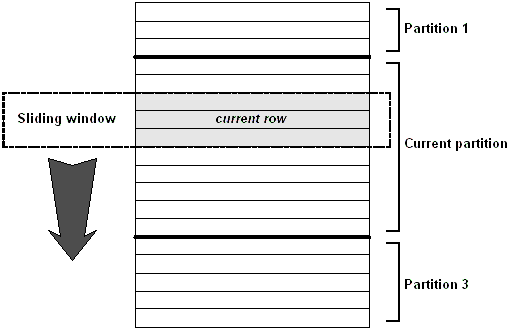OLAP functionality includes the concept of a sliding window that moves down through the input rows as they are processed. Additional calculations can be performed on the data in the window as it moves, allowing further analysis in a manner that is more efficient than using semantically equivalent self-join queries, or correlated subqueries.
You configure the bounds of the window based on the information you are trying to extract from the data. A window can be one, many, or all the rows in the input data, which has been partitioned according to the grouping specifications provided in the window definition. The window moves down through the input data, incorporating the rows needed to perform the requested calculations.
The following diagram illustrates the movement of the window as input rows are processed. The data partitions reflect the grouping of input rows specified in the window definition. If no grouping is specified, all input rows are considered one partition. The length of the window (that is, the number of rows it includes), and the offset of the window compared to the current row, reflect the bounds specified in the window definition.

Defining a window
Window definition: inlining using the OVER clause and WINDOW clause
 |
Discuss this page in DocCommentXchange.
|
Copyright © 2010, iAnywhere Solutions, Inc. - SQL Anywhere 12.0.0 |